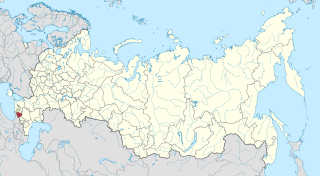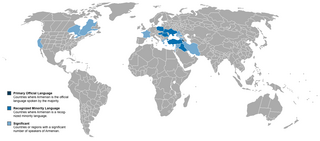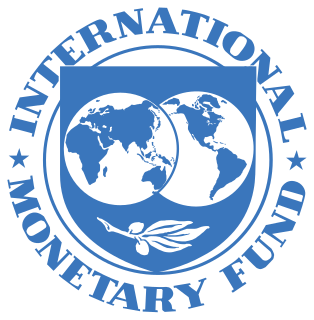
After registering a steady increase during Soviet period, the population of Armenia declined from peak value 3.633 mln in 1992 to 2.986 mln in 2017.

The economy of Armenia grew by 7.5% in 2017 and reached a nominal GDP of $11.537 billion per annum, while per capita GDP grew by 10.1% and reached $3,880.

A Communist state is a state that is administered and governed by a single party, guided by Marxist–Leninist philosophy.
The Office for National Statistics (ONS) is the executive office of the UK Statistics Authority, a non-ministerial department which reports directly to the UK Parliament.

The Transcaucasian Socialist Federative Soviet Republic, also known as the Transcaucasian Soviet Federative Socialist Republic, was a constituent republic of the Soviet Union that existed from 1922 to 1936. It embraced Armenia, Azerbaijan and Georgia. As they were separated from Russia by the Caucasus Mountains, they were known traditionally as the Transcaucasian Republics. Created ostensibly to consolidate the economic situation of the region, the TSFSR was also useful in consolidating Bolshevik control over the states. It was one of the four republics to sign the treaty establishing the Soviet Union in 1922.

Andranik Nahapeti Margaryan served as the Prime Minister of Armenia from 12 May 2000, when the President appointed him, until his death on 25 March 2007. He was a member of the Republican Party of Armenia. He succeeded the Sargsyan brothers: Vazgen Sargsyan, who was murdered during the Armenian parliament shooting on 27 October 1999 and Aram Sargsyan, whom the President appointed a week later, but fired on 2 May 2000.

Azerbaijan, officially the Azerbaijan Soviet Socialist Republic, also referred to as Soviet Azerbaijan, was one of the constituent republics of the Soviet Union between 1922 and 1991. Created on 28 April 1920 when Soviet Russia brought pro-Soviet figures to power in the region, the first two years of the Azerbaijani SSR were as an independent country until incorporation into the Transcausasian SFSR, along with the Armenian SSR and the Georgian SSR.

The Karachay-Cherkess Republic or Karachay-Cherkessia is a federal subject of Russia. It is geographically located in the North Caucasus region of Southern Russia and is administratively part of the North Caucasian Federal District. Karachay-Cherkessia has a population of 477,859.

The Nakhichevan Autonomous Soviet Socialist Republic, abbreviated as Nakhichevan ASSR, was an autonomous republic within the Azerbaijan SSR, itself a republic within the Soviet Union. It was formed on 16 March 1921 and became a part of the Azerbaijan SSR proper on 9 February 1924.

Stepanakert, Khankendi and originally called Vararakn, is the capital and the largest city of the de facto Republic of Artsakh. The Republic has no international recognition, being deemed part of the Republic of Azerbaijan by most countries. As of 2015, the population of Stepanakert is 55,200.

The Central Bank of Armenia is the central bank of Armenia with its headquarters in Yerevan. The CBA is an independent institution responsible for issuing all banknotes and coins in the country, overseeing and regulating the banking sector and keeping the government's currency reserves. The CBA is also the sole owner of the Armenian Mint.

The Nagorno-Karabakh Autonomous Oblast was an autonomous oblast within the borders of the Azerbaijan Soviet Socialist Republic, mostly inhabited by ethnic Armenians. It was divided into five raions or administrative divisions:

Lernamerdz is an Armenian village of 400 people in Armavir Province that still follows Soviet communism, even after the fall of the Soviet Union in 1991.

Public Television of Armenia, Hayastani Hanrayin Herrustaynkerut’yun; ARMTV or APMTV, is Armenia's public television station that began transmissions in 1956.

The Police of the Republic of Armenia is the national police of Armenia. The head is Valeri Osipyan, in office since 10 May 2018.
This article focuses on ethnic minorities in the Republic of Azerbaijan.

The Ministry of Foreign Affairs of the Republic of Armenia is a state body of executive power, which elaborates and implements the foreign policy of the Government of the Republic of Armenia, organizes and manages diplomatic service.

Norair Unanovich Arakelian is an Armenian and Soviet mathematician, specializing in approximation theory and complex analysis. He is known for Arakelian's approximation theorem. Also, on the base of his approximation theory results, Arakelian has disproved an old conjecture of Rolf Nevanlinna from the value distribution theory. This and other his results Arakelian has presented at the International Congress of Mathematicians at Nice in 1970.


















